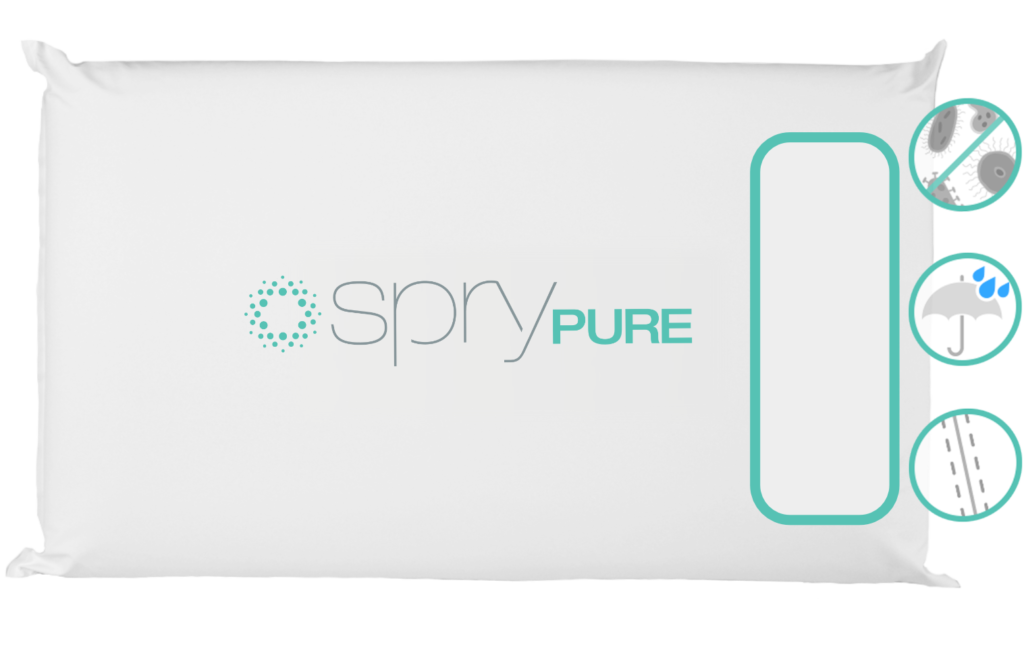blog
blog | 09.16.19
Q&A with Pattie Bondurant DNP, RN
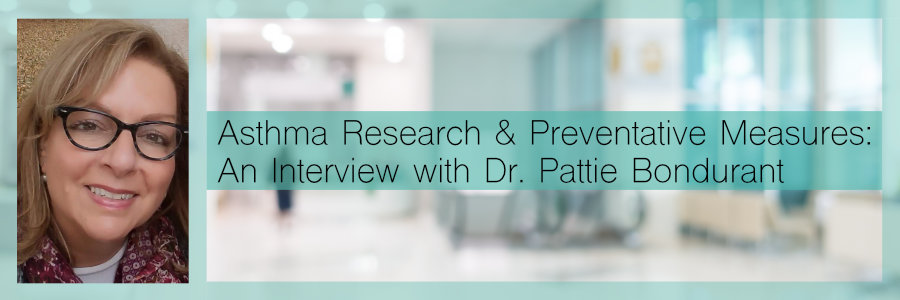
Having been founded by pioneers in the healthcare industry, Spry Therapeutics has a vested interest in continuing to provide solutions that enable our customers to live healthier, more comfortable lives.
In order to better understand the current evidence around environmental and preventative measures, we spoke with Pattie Bondurant DNP, RN. For over 25 years, Dr. Bondurant has been active in transforming care for kids with all kinds of chronic illnesses in the sphere of pediatric nursing and clinical care. Having spent several years in nurse leadership roles at top-tier pediatric hospitals, Dr. Bondurant is trusted by her colleagues for her unrivaled expertise in healthcare management, neonatal and pediatric nursing, and quality improvement. Her work regionally and nationally has resulted in improved care and outcomes for neonates, children and adults.
Spry Therapeutics (ST): When and why did you start working in pediatric Asthma – and in what capacity?
Dr. Pattie Bondurant (PB): I’ve spent most of my career taking care of young children with many types of chronic illnesses. I had the opportunity to really focus on improving care for kids with asthma when I did my doctoral work. I focused on Quality Improvement efforts to redesigning community and primary care for high-risk kids with asthma to assure they got the right care at the right time and in the right place. The outcome of this work was a significant reduction in Emergency Department visits and Inpatient admissions. Prior to that, I had taken care of children with asthma as a bedside nurse and as a Clinical Nurse Specialist in a community care clinic setting.
ST: Many children end up in the emergency room as a result of an asthma attack. In your opinion, what are the most effective methods parents can use to help their children combat asthma, both in and out of the home, and prevent ER visits?
PB: There are many ways parents can assure kids with asthma are living in optimized environments and receiving the best primary care to prevent the dreaded and scary ED visits and admissions to the hospital.
Here are a few suggestions as validated by the Asthma and Allergy Foundation of America:
- Your child should have an asthma action plan, and everyone caring for your child should have a full understanding of the plan and stick to it; that includes parents, grandparents, school and all after school activities.
- Encourage your child to take their medicines as prescribed. Develop a medication routine early in life.
- Identify & avoid triggers for your child.
- Teach your child, as they get older, what things trigger asthma attacks.
- Make sure your child gets a yearly flu shot.
- Know the signs of a flare-up and respond early and consistently.
- Have a plan, written in the asthma action plan and known to caregivers, so everyone knows what to do for a severe flare-up.
- Reduce environmental triggers such as;
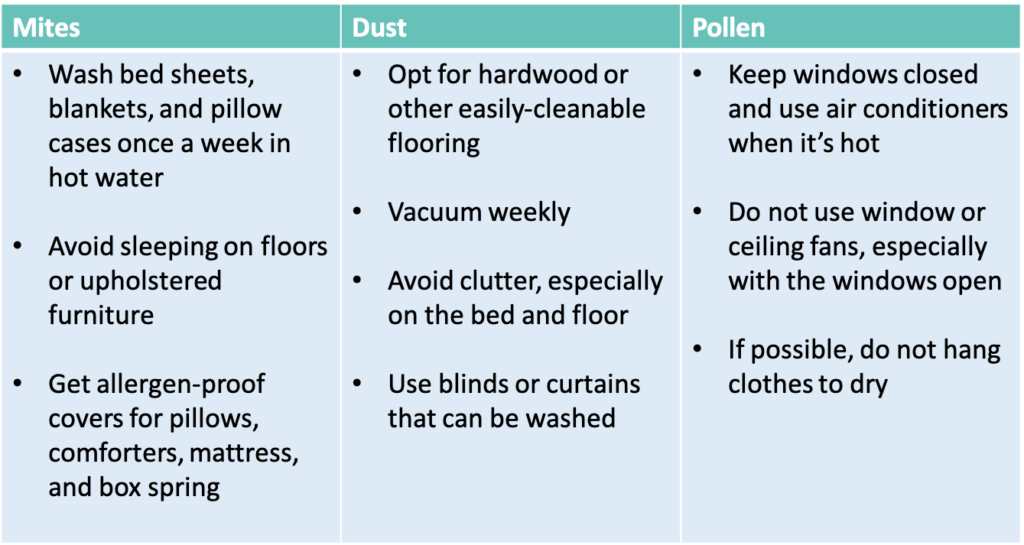
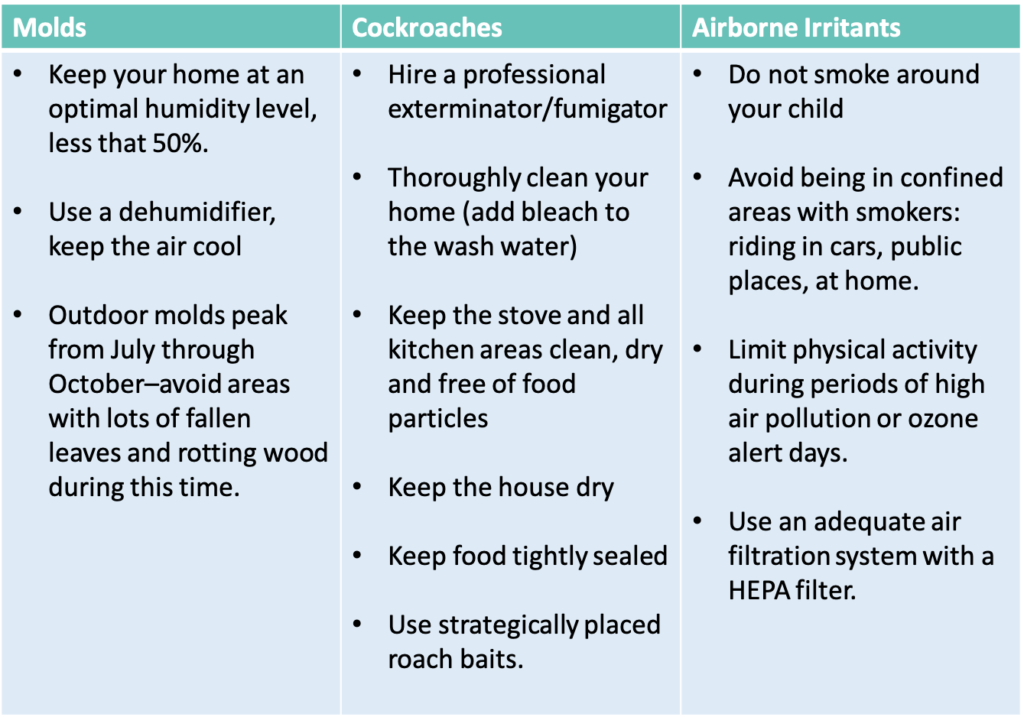
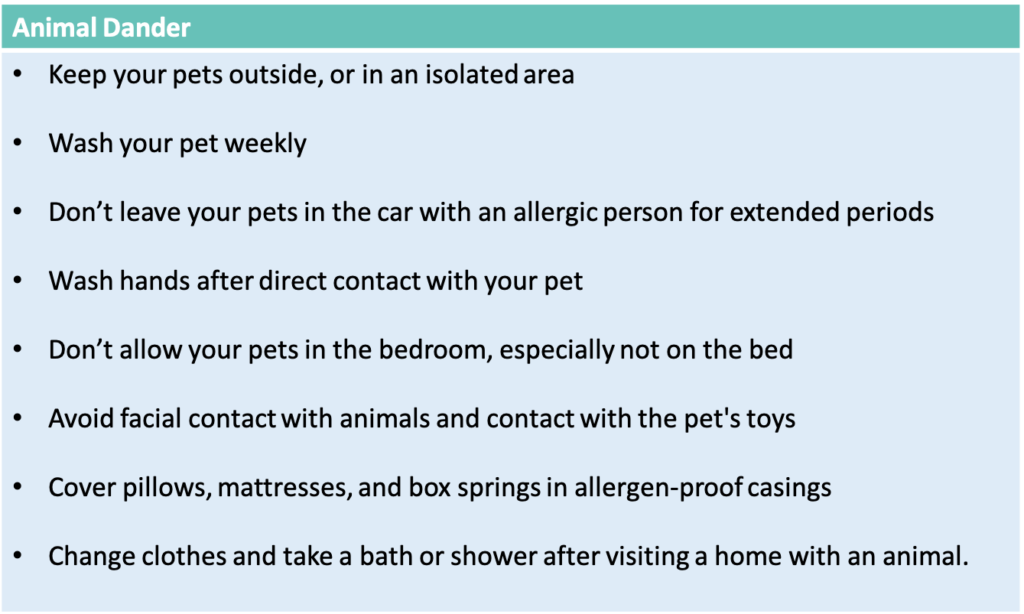
ST: What are your hopes for asthma research over the next 10 years?
PB: Researchers are still searching for new drugs that will be able to prevent and relieve asthma symptoms. Care will become more personalized as research will inform providers of how phenotypes of individual patients affect individual responses to treatment plans. Biomarker research is a vital component in the development of new treatment plans; in particular, identifying biomarkers for exacerbations of asthma.
Other studies are investigating the factors that play a role in asthma development. Identifying the triggers that set off asthma symptoms could one day enable researchers to stop those processes and prevent asthma before it starts.
ST: As a healthcare professional that is familiar with our pillow, Spry Pure, and its soft-surface filter technology, what are some benefits the pillow offers the asthmatic community? Have you seen results?
PB: The Spry Pure pillow is an optimal solution for parents who are concerned about controlling the environmental triggers that contribute to their child’s asthma. The state-of-the-art Spry Pure pillow features PneumaPure filtration technology, which offers 100% protection from asthma-triggering bacteria, mold, viruses, and dust. Made from a unique fabric, the pillow is waterproof, yet totally breathable, and requires no laundering. The Safeweld seams eliminate the need for stiches and seams, creating an airtight barrier. All of this together creates the perfect pillow that allows only clean air to pass through.
Other hypoallergenic pillows have a barrier pore size of about 4-6 microns. The standard dust mite allergen is about 2 microns, with the average bacteria coming in at about 0.8 micron. That means those asthma triggers are coming right through that “hypoallergenic” barrier. The Spry Pure pillows block all of these triggers from getting into the interior, no matter how small. This means your child sleeps on pure, clean air – significantly reducing their exposure to triggers.
ST: Many children from underserved communities suffer from asthma and allergies – are there resources available specifically for children in these communities so they can get the care they need?
PB: There are many programs and chances to help reduce health differences among minority children with asthma who live in these communities. Some of these are:
- Asthma education and management programs just for minority communities
- School-based asthma management programs
- Programs to reduce exposure to allergens (such as cockroaches in inner city homes)
- Community programs created to improve access to quality care
- City, state and federal programs; check with your local and state Health Departments or Visiting Nurses Association to access these resources.
The Asthma & Allergy Foundation of America (AAFA) and the National Pharmaceutical Council created the report, Ethnic Disparities in the Burden and Treatment of Asthma. This report talks about the health disparities found between Hispanic, African American and white populations. This report looks at the genetic, environmental and behavioral causes of asthma. This report also looks at ways the causes of asthma can be reduced.
ST: What are some additional resources parents can turn to so they can stay up to date and informed?
PB: Here are a few links as resources for parents found at https://www.aafa.org
- Asthma Capitals
- Asthma Allergies Children
- Asthma Facts
- Asthma Research
- Asthma Triggers
- Allergy Capitals
- Allergy Facts
- Asthma Research
- Asthma Triggers
- Allergy Capitals
- Allergy Facts
- AAFA Chapters
About Dr. Bondurant
Currently, Pattie is the co-founder and Chief Transformation and Quality Officer of TransForm Healthcare Consulting, LLC. The company’s focus is on working with hospitals and health systems to develop quality strategies and architect the successful implementation of Quality & Safety programs. Pattie remains clinically active as a consultant to NICUs around the country.


